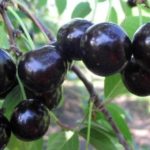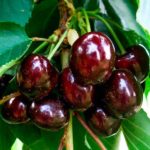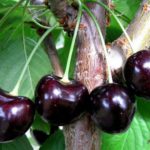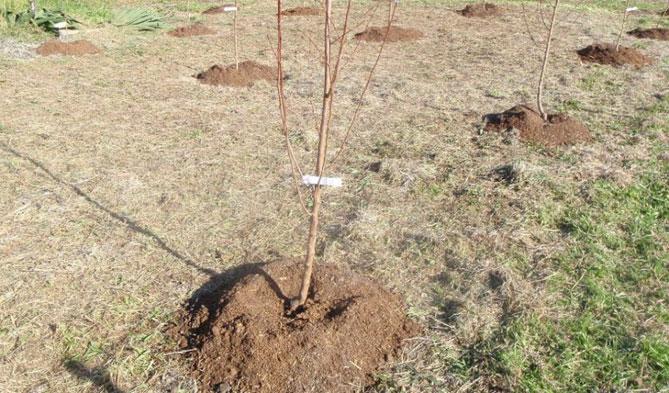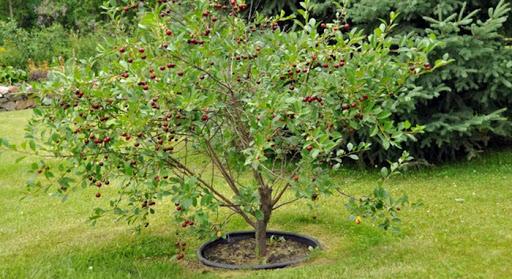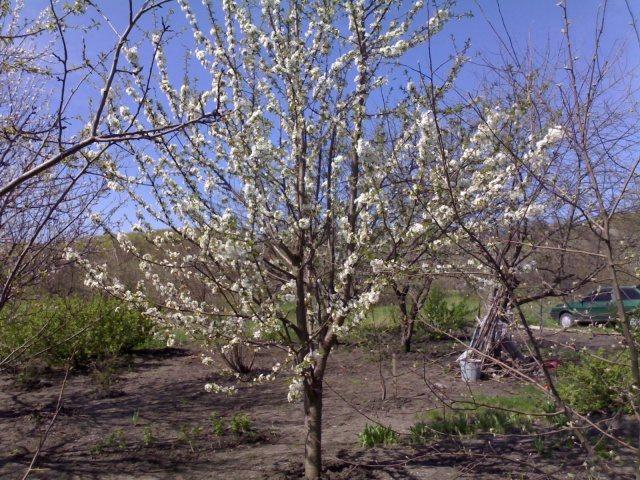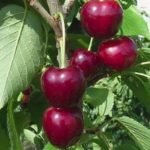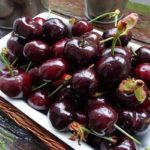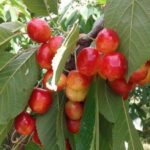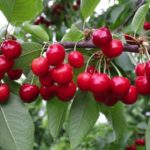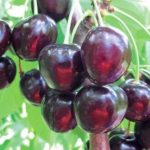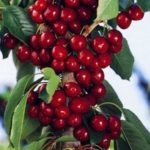In Russia you can grow different varieties of cherries. Despite the fact that this plant is heat-loving and grows better in the southern regions, cold-resistant varieties have also been bred. Let's consider the description and characteristics of the Black Prince cherry, the pros and cons of the variety, what are the features of agricultural technology, the subtleties of tree care, how to prevent diseases, when to harvest and how to store the crop.
Description and characteristics of the Black Prince variety
Designed for cultivation in temperate climates, it tolerates cold weather well, in winter – frosts of 30˚C. When the branches freeze, the tree continues to bear fruit; there is no interruption in fruiting.
Cherry Black Prince grows up to 3.5 m, it has a medium spreading crown and strong growth. There are many leaves, they are wedge-shaped and bright green in color. The variety is self-sterile, so the tree needs a pollinator - a cherry tree, which blooms at the same time as it.
The tree begins to bear fruit in the 3rd year, the yield is over 20 kg per plant. The berries of the Black Prince are dark, maroon in color, large, weigh 5-9 g. With a characteristic aroma and taste, juicy. Cherry ripening occurs in July. The berries can be eaten fresh, processed into sweet preparations, frozen for the winter, and even dried. When fresh, they do not spoil for a long time.
Pros and cons of cherries
Advantages of the Black Prince variety:
- cold resistance;
- precocity;
- resistance to diseases and pests;
- moderate tree height;
- productivity;
- large-fruited, keeping quality and universal use of berries;
- good taste and aroma.
Disadvantages of the variety: pollinators are required.
Features of growing a tree
The place and time of planting will influence the further development of the tree, so it needs to be planted in the garden at the appropriate time and in an area where it will feel comfortable.
When and where to plant
Planting time is mid-spring or mid-autumn. The main condition is to do this before the buds open or after the leaves fall, that is, when the seedling is in a dormant period, there is no sap flow in its tissues. The roots of the cherries must be fresh; if the tips are dry, they need to be trimmed.
The place where the Black Prince variety will grow should be chosen on the sunny side of the site. It should be protected from winds and located on a flat area where water does not accumulate. The distance from fences and buildings and to neighboring trees must be at least 2 m.
Planting process
Cherries are planted according to the standard scheme: first, they dig a planting hole 0.7 m deep and at least 0.5 m wide. A drainage layer 10 cm thick of broken bricks, slate, and pebbles is laid on the bottom. A layer of a mixture of humus, ash and excavated earth is poured onto it in a ratio of 1 to 1.
Water and cover the soil with mulch of straw, dry leaves, and hay. A peg is placed nearby and the trunk is tied to it so that the seedling stands straight.
Subtleties of caring for the variety
No less important than proper planting is further care of the plant. The work package includes watering and feeding, pruning and preparation for winter.
Watering and fertilizing
For the first 1.5 months, until the seedling grows new roots, it needs to be watered every week. The first season is every month. An adult tree needs to be watered when there is no rain, especially after flowering, when the berries are forming and filling. In the first year after planting cherries, fertilizers are not applied. In subsequent years, fertilize 3 times a year: in the spring, before the leaves bloom, before flowering and in the middle of the period of berry formation.
You can use mineral fertilizers or add organic matter: 1 bucket of humus and 1 kg of ash for each plant.
Pollinators
Cherries of other varieties should be planted close to the Black Prince.At the same time, the varieties Podbelskaya, Brunette, Griot, Apukhtinskaya, Kentskaya, and Valery Chkalov bloom. For successful pollination, 1 tree per 3-4 Black Prince cherries is enough.
Preparing for winter
In the fall, after pruning, the soil around the cherry trunk is covered with a thick layer of mulch. You can use old straw, hay, sawdust, clean fallen leaves or dense agrofibre.
Disease Prevention
In the fall, you need to whitewash the trunk and thick branches to prevent sunburn on the bark, which is thin in the cherry tree. This is necessary to reduce the likelihood of developing coccomycosis and moniliosis. In the spring, they are sprayed with copper-containing preparations against fungal diseases.
Productivity, collection and storage
Cherry berries are collected after ripening - from the end of June. They should not be overripe or too soft. These are not stored for long and do not withstand transportation. Berries intended for storage are collected in dry weather (wet from rain or dew are not stored at all), cut off with petioles, placed in baskets or shallow plywood boxes with a layer of no more than 10 cm. Placed in a cold place, in a cellar or basement, where the cherries are can be stored for a maximum of 2 weeks.
Only whole, undamaged fruits are selected for storage; the rest must be eaten, processed into blanks or frozen. Frozen cherries can be stored in the refrigerator for up to six months.
The Black Prince cherry variety is cold-resistant; it can be chosen for planting by gardeners in areas with a moderately cold climate. The tree grows medium tall and produces an excellent harvest.But the greatest advantage of the variety is considered to be large, sweet, juicy dark red fruits, which can not only be eaten fresh, but also used for processing into blanks and for freezing. This means that they can be consumed in winter.

